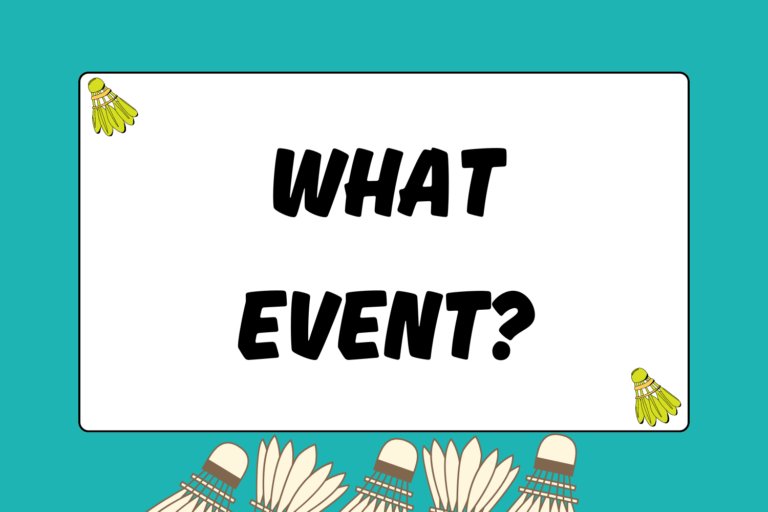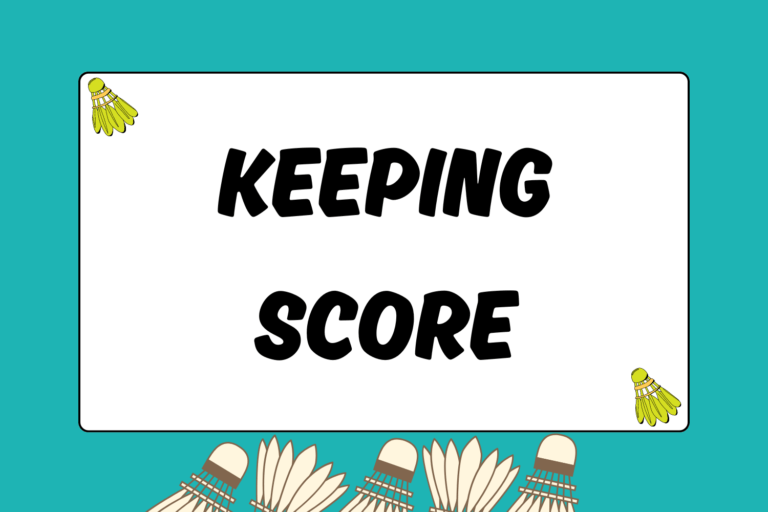Ending a rally with a huge smash can be a major confidence boost. Smashing, however, is more than just hitting the shuttlecock as hard as you can. Technique, placement, and power are important for every shot, and the smash is no exception.
This guide provides the tools you’ll need to start perfecting your smash.
Smashing is Essential
Some players avoid hitting smashes because they think it’s either too flashy or too inefficient. Instead, they opt to use more finesse by dropping and clearing. But if you want to be a complete player, you must learn how to smash and when to use it.
When executed well, the smash is another tool you have at your disposal on the court. The more weapons you have available, the more likely you’ll find a way to beat your opponent.
Step 1: Gripping the Racket
As with all forehand shots, you should use the standard forehand grip. With your off-hand, hold the racket out in front of you by its shaft. Position the racket so that the head is on its side and forms a straight line with the rest of the racket. Then, you can grasp the handle like you were shaking someone’s hand.
This is the same handshake grip you use for your clears and drops. You’ll develop better consistency by using the same grip for all forehand shots.
Step 2: Positioning Yourself
Most of the power in your smash will come from your wrist, but having proper positioning will help ward off fatigue. When the shuttlecock is in the air, position yourself under it with the shuttlecock slightly in front of you. This way, you use your momentum to add power to your shot because you’re moving toward the shuttlecock as you strike it.
Like all overhead shots, remember to raise your hands and bend your elbows at 90 degrees before you swing.
Step 3: Hitting the Smash
Try to approach your smash the same way you would for all overhead shots. Having the same form and technique disguises your shot until the moment you hit it. Contact the shuttlecock at the highest point possible, just like you would for clears and drops.
The difference here is that your racket should be angled downward (the exact angle of the racket isn’t crucial).
Step 4: Aiming the Smash
When placing your shot, be aware of the path the shuttlecock takes. The trajectory of a smash should be as steep as possible while still passing over the net. The steeper the angle of a smash, the more difficult it becomes for your opponent to return.
Even if he does return your smash, it must be angled upward just as steeply as you hit it. This will give you an excellent opportunity to follow up with another smash to end the rally.
Hot Tip: Jump Smashing
If your smash is becoming consistent enough, you can add another dimension by jumping before you smash. Your timing will need to change such that you should be swinging right as you start to fall from the peak of your jump.
If you time this correctly, you’ll fall as you contact the shuttlecock, increasing the speed of your smash tremendously.
Practicing the Smash
The smash may be the most difficult shot to practice simply because the energy you exert will prevent you from practicing for as long as you would like. To practice, grab a partner who can clear smashes well.
When you begin practicing the smash for the first time, focus on technique and placement. This will allow you to get a better feel for smashing while not expending too much energy. Contacting the shuttlecock consistently will also help you develop muscle memory faster. You can apply more power to your smashes as you become more comfortable.
Smashing in a Match
During a match, there are certain things you must consider that are irrelevant during practice. First, you must be aware of your energy level because your shots will be less effective as you become more tired. You’ll be exerting more energy to compensate for your exhaustion, which may produce a weaker smash.
Also, consider how effective your smash is against your opponent. If your opponent has strong smash returns, you’ll need to be more selective about when you smash. Conversely, if your opponent has trouble with your smashes, you should exploit that advantage.
Have a Balanced Attack
Smashing is the most explosive shot in badminton, but as such, you should use it wisely. Aside from sapping your stamina quickly, excessive smashing will also become less effective as your opponent makes proper adjustments against it. A smart opponent will take note of certain areas where you tend to smash and adjust his base point further back to give himself more time to react.
Instead of smashing relentlessly, think about using the threat of a smash to your advantage. If your opponent sets you up with a clear, he will probably expect you to smash. Instead, you can sometimes drop or even clear to throw your opponent off. Most of the time, however, you shouldn’t pass up the opportunity to kill a weak clear or a high drop with a smash. The key is to mix up your shot selection to keep from becoming predictable to your opponents.





